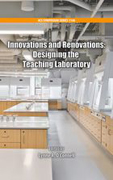
Innovations and Renovations: Designing the Teaching Laboratory
O'Connell, Lynne A.
Shows the latest developments in the conception and construction of academic chemistry labs. Innovations stem from a conference on chemical education, held at Pennsylvania State University. As any homeowner knows, the prospect of embarking on a renovation project is both exciting and scary. Will the finished space function as it was envisioned? Will the environment be both comfortable and aesthetically pleasing? Will the project be completed on time and within budget? Similar questions and emotions come into play when an academic institution undertakes a laboratory renovation or construction project. This highly collaborative process can be both complex and intimidating. Exploring a variety of designs that have succeeded in enhancing student learning in the laboratory and fostering positive attitudes toward science is an important first step on this journey. An impending teaching laboratory renovation project in my own department was the inspiration for the symposium coordinated for the Biennial Conference on Chemical Education at Pennsylvania State University on July 29, 2012. The chapters in this volume describe projects at institutions that vary in size and type and are written from the perspective of faculty and staff, and even members of architectural firms who have worked on multiple academic laboratory projects. Large and small schools, public and private institutions, as well as both comprehensive universities and primarily undergraduate colleges, are all represented. The impact of evidence-based teaching practices on chemistry education, such as the use of guided inquiry and cooperative learning, is reflected in these laboratory designs. Many schools are promoting interdisciplinary collaborations among the sciences by constructing spaces that are shared by multiple departments. In addition, a desire to make the field of chemistry more accessible to non-scientists, by including open communal areas and increased visibility into laboratories, is echoed in more than one chapter. While common themes do emerge throughout the book, each chapter also offers its own unique perspective. You will learn about the history of teaching lab design via descriptions and photos of the original laboratory spaces, and then see how they were transformed into modern facilities. Laboratory construction projects that have resulted in award-winning "green" buildings are described. You will read about a school that connects the instructor to the students using monitors that are distributed throughout the lab. You will discover the flexibility of "super labs" and the convenience of an environmental chemistry mud room. This book will give the constituents at your institution a chance to examine the innovations that have been incorporated into other educational labs and enable everyone involved to make informed decisions as your renovation or construction project moves forward. Readership: Academics and Professionals working in chemistry laboratories.
- ISBN: 978-0-8412-2912-9
- Editorial: OXFORD UNIVERSITY PRESS.
- Encuadernacion: Tela
- Páginas: 184
- Fecha Publicación: 15/05/2014
- Nº Volúmenes: 1
- Idioma:
